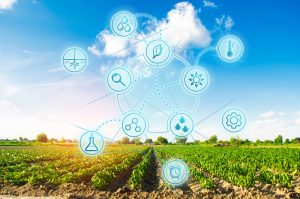To Slow Climate Change all we need is Hunger and Malnutrition.
Last month, The World Bank issued this statement in its Global Food Security Bulletin: “Record high food prices have triggered a global crisis that will drive millions more into extreme poverty, magnifying hunger and malnutrition, while threatening to erase hard-won gains in development.”
In the Netherlands, the government has budgeted 25 billion taxpayer Euro’s to buy farmers out of the Dairy business in order to reduce the use of Nitrogen fertilizers. This is to meet European Union requirements that are currently non negotiable.
The Netherlands, the second largest food exporter in the World, would reduce their Dairy herd by a third meaning less milk, cheese and milk proteins. Fewer farms and farmers and less food to be exported and help alleviate global hunger. All in the name of reducing forecasted Climate Change.
In Canada, Prime Minister Justin Trudeau is moving to reduce the use of Nitrogen fertilizers in food production significantly by 2030. That would cause a reduction in Canadian grain and food output. Output that predominantly moves into the global market to feed the world. More hunger equals less forecasted Climate Change.
One has to wonder if Mr Trudeau and Mr Rutte in the Netherlands were aware that their seemingly well-meaning decisions would have such a dramatic ripple effect on developing and poorer parts of the world that suffer the most from the reduced availability of food.
I doubt it.
In 2021, the United Nations reported that 10% of the World (or 700-800 million people) are experiencing hunger and malnutrition. A recent high.
Then along came current events.
The Russian invasion of Ukraine cut the world off from significant supplies of wheat, barley, and sunflower oil. An even greater impact on food production was the restriction of global access to Russian nitrogen fertilizers – a key global supplier. (Fertilizers are needed to maintain global food production around the world. A quote from Vaclav Smil in his recent book, “How The World Works,” is revealing: “Half of the world’s population could not be sustained without synthetic nitrogen fertilizers.”)
In addition, across the world, there was a less than perfect growing season for corn, wheat, rice and soybeans and food production was reduced further. Add all these events together, the UN is predicting the number of hungry and malnourished will go even higher in 2022.
And yet, head scratching decisions across the globe continue to be made.
In May 2020, the Sri Lankan government banned chemical fertilizers and agrochemicals. The goal was to convert to organic food production to meet International financing terms. There wasn’t a transition plan or any other “organic” fertilizers and agrochemicals available to replace the discontinued inputs. Almost immediately, fruit and vegetable production dropped 35% while paddy rice production declined by 40%. Tea production, Sri Lanka’s largest cash crop and foreign exchange earning ag export, dropped 50%.
Sri Lanka is now experiencing food shortages, foreign currency shortages, an international debt crisis, fuel shortages, and a popular revolt that has recently resulted in a new government.
The Netherlands, Canada and Sri Lanka have or intend to cut back on food production that will increase hunger and malnutrition. As Sri Lanka and the Netherlands have already experienced, it will likely lead to more civil unrest. Who or where is next? From Sri Lanka, to the Hague, to Ottawa, separate public policy decisions are being taken. Decisions that threaten life, liberty, and the pursuit of happiness for the most vulnerable third of the world.
We are watching a modern day variation of the Hunger Games. Just like the fictional story, it is life and death.



